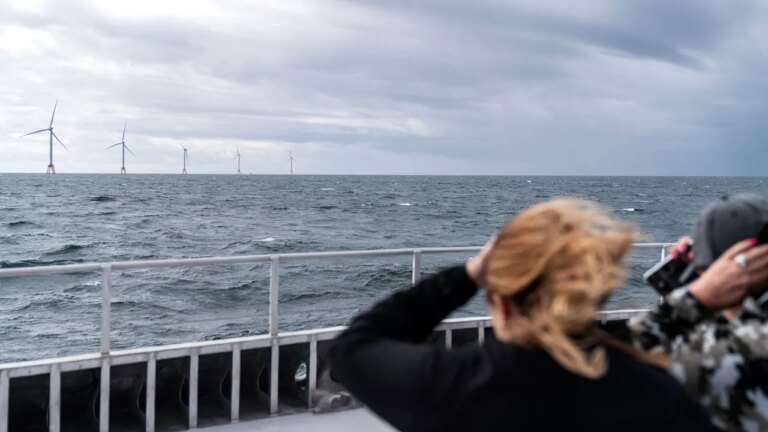California Legislature Greenlights Power Purchase to Prevent Blackouts
The California Legislature made a significant decision on Thursday, granting Democratic Governor Gavin Newsom's administration the authority to procure a substantial amount of electricity. This move aims to safeguard the state from potential blackouts while also kickstarting the fledgling offshore wind industry on the West Coast.
Wind Power Projects Promise Relief
In the prior year, five companies collectively invested approximately $750 million in leasing areas off the California coast to construct wind turbines. These projects hold the potential to generate electricity capable of powering 3.5 million homes. This electricity would be crucial in preventing blackouts during severe heatwaves that frequently strain the state's electrical grid, given California's status as the nation's most populous state.
Challenges Faced by Utility Companies
However, the state's largest utility companies have hesitated to commit to purchasing power from these projects due to concerns about cost and construction timelines. In addition to building the wind turbines, significant infrastructure upgrades at state ports and new power lines are needed to transport energy from the ocean to the land.
A Financial Solution
The approved bill empowers the state to procure this power, with the funding coming from a surcharge added to Californians' electricity bills. The exact amount of this charge will be determined by state regulators, and consumers will not bear the cost until the wind projects are operational, which could take several years.
Debate Over Costs
Critics argue that this legislation will result in all California ratepayers paying for the offshore wind projects. Republican State Senator Brian Dahle opposes the bill on these grounds. In contrast, proponents contend that the bill will yield long-term savings on electric bills. With a legal mandate for California to derive all its electricity from renewable or non-carbon sources by 2045, offshore wind projects are seen as a crucial investment, particularly for nighttime power generation when solar energy is less available.
Efficiency and Cost Control
Supporters argue that it makes economic sense for offshore wind projects to sell all their electricity to the state rather than dividing it among multiple utility companies. This approach is expected to reduce costs and keep rates more affordable for consumers.
Time-Limited Authority
The Department of Water Resources will be entrusted with purchasing the power, but this authority will expire in 2035, necessitating a subsequent legislative vote for an extension.
California's Renewable Energy Transition
California has been rapidly transitioning away from fossil fuels, with regulations in place to phase out most new gas-powered cars by 2035. Despite these efforts, the state has faced challenges in maintaining clean energy values during the transition.
Preventing Blackouts and Ensuring Reliability
The extreme heat wave of 2020 strained the state's power grid, leaving hundreds of thousands of homes without electricity. Similar incidents in subsequent summers prompted energy conservation appeals during peak demand periods. To address these issues, Governor Newsom and the Legislature allocated $3.3 billion to establish a "strategic reliability reserve," including investments in diesel-powered generators and extending the lifespan of certain gas-fired power plants slated for retirement.
Balancing Clean Energy Goals
The bill also places requirements on utility companies to maintain adequate energy reserves, backed by penalties for non-compliance. This is intended to deter excessive reliance on the strategic reliability reserve, which employs air-polluting gas generators.
Urgency and Collaboration
Amidst these challenges, Alice Reynolds, President of the California Public Utilities Commission, emphasized the need for swift action and collaboration to ensure the state's energy stability and transition to clean power sources.

